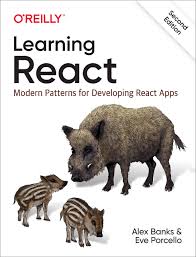React, developed by Facebook, is a leading JavaScript library for building user interfaces. This white paper delves into the core concepts of React, drawing heavily from the insights of "Learning React" by Alex Banks and Eve Porcello, published by O'Reilly Media. We'll explore React's fundamental principles, key features, and best practices for building efficient and maintainable applications.
Learning React: A Comprehensive White Paper
1. Introduction
React, developed by Facebook, is a leading JavaScript library for building user interfaces. This white paper delves into the core concepts of React, drawing heavily from the insights of "Learning React" by Alex Banks and Eve Porcello, published by O'Reilly Media. We'll explore React's fundamental principles, key features, and best practices for building efficient and maintainable applications.
2. Core React Concepts
- JSX: React utilizes JSX, a syntax extension to JavaScript that allows you to write HTML-like code within your JavaScript files. This enhances readability and maintainability.
- Components: React applications are built using components, which are reusable building blocks that encapsulate UI logic and presentation.
- Virtual DOM: React maintains an internal representation (virtual DOM) of the actual DOM. When data changes, React efficiently updates only the necessary parts of the real DOM, resulting in high performance.
- State and Props:
- State: Represents the internal data of a component that can change over time, triggering re-renders.
- Props: Read-only properties passed down from parent components to child components.
3. Key React Features
- Hooks: Introduced in React 16.8, Hooks allow you to use state and other React features within functional components, making them more flexible and reusable.
- useState: Enables the management of state within functional components.
- useEffect: Allows for side effects like fetching data or subscribing to events.
- Context API: Provides a way to share data across components without passing props through multiple levels of the component tree.
- React Router: A popular library for handling routing within React applications, enabling navigation between different views.
- Redux: A predictable state container that helps manage complex application state, especially in large-scale applications.
4. Building React Applications
- Setting Up a React Project:
- Using Create React App: The recommended way to start a new React project, providing a pre-configured development environment.
- Component Structure: Designing and organizing components effectively, following principles like Single Responsibility Principle and Composition.
- State Management: Choosing the appropriate state management approach, such as using the built-in useState hook, Context API, or a library like Redux.
- Data Fetching: Making API requests to fetch data and update the component state.
- Testing React Components: Writing unit tests and integration tests to ensure the correctness and reliability of your components.
5. Learning React: Key Takeaways
- Focus on fundamentals: "Learning React" provides a solid foundation in React's core concepts, guiding learners through essential principles and best practices.
- Hands-on examples: The book includes numerous practical examples and exercises, enabling readers to apply their knowledge and build real-world applications.
- Community and resources: The React community is vast and active, providing access to a wealth of resources, including tutorials, documentation, and online forums.
6. References
- Books:
- "Learning React" by Alex Banks and Eve Porcello (O'Reilly Media)
- "React in Action" by Mark Dalgleish (Manning Publications)
- "Eloquent JavaScript" by Marijn Haverbeke (No Starch Press) (for JavaScript fundamentals)
- Websites:
- React Official Website: https://create-react-app.dev/
- Redux:
- Research Papers:
- While React itself is primarily a library, research papers on front-end frameworks and UI development can provide valuable insights into the broader context of React's design and evolution.
Disclaimer: This white paper provides a general overview of React and its key concepts. For in-depth knowledge and practical implementation, refer to the official documentation, recommended resources, and the "Learning React" book.
This expanded white paper provides a comprehensive overview of React, drawing heavily from "Learning React" by O'Reilly. It explores core concepts, key features, best practices, and provides a list of valuable resources for further exploration.
